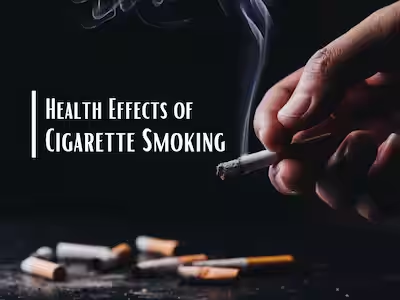Quitting smoking is a challenging but incredibly worthwhile endeavor for your health and well-being. Here are some steps and strategies that might help you overcome smoking addiction:
1. Set a Quit Date: Choose a specific date within the next two weeks to quit smoking. This gives you time to prepare without losing your motivation.
2. Tell Your Friends and Family: Informing those close to you can provide you with the support and encouragement you need.
3. Anticipate and Plan for Challenges: Be aware of the situations, people, and places that trigger your urge to smoke, and develop strategies to cope with them.
4. Remove Cigarettes and Other Tobacco Products: Get rid of all your cigarettes, lighters, ashtrays, and any other smoking-related items.
5. Talk to Your Doctor: There are medications and nicotine replacement therapies (NRTs) that can help reduce withdrawal symptoms and increase your chances of quitting.
6. Consider Behavioral Therapy: This involves working with a counselor to find strategies to quit smoking and manage cravings.
7. Stay Busy: Keeping yourself occupied can help you avoid thinking about smoking. Engage in activities like exercising, hobbies, or spending time with non-smoking friends and family.
8. Join a Support Group: Being part of a group of people who are also trying to quit smoking can provide mutual support and encouragement.
9. Practice Relaxation Techniques: Stress is a common trigger for smoking, so techniques like deep breathing, meditation, and yoga can help manage stress levels.
10. Reward Yourself: Set up a system of rewards for milestones you reach, like a week, a month, or a year smoke-free.
Would you like more information on any of these steps, or do you have specific questions or concerns about quitting smoking?
FACTS ABOUT SMOKING
Health Effects
1. Leading Cause of Preventable Death: Smoking is the leading cause of preventable death worldwide, responsible for about 7 million deaths each year.
2. Cancer: Smoking is a major cause of various cancers, including lung, throat, mouth, esophagus, and bladder cancer.
3. Respiratory Diseases: Smoking can lead to chronic respiratory conditions such as chronic obstructive pulmonary disease (COPD) and emphysema.
4. Cardiovascular Diseases: It significantly increases the risk of heart disease, stroke, and peripheral vascular disease.
5. Immune System Suppression: Smoking weakens the immune system, making it harder for the body to fight off infections.
6. Reduced Lung Function: Smoking damages the lungs, reducing lung capacity and making it harder to breathe.
Ingredients and Chemicals
1. Tobacco Smoke: Contains over 7,000 chemicals, many of which are toxic. At least 70 of these chemicals are known to cause cancer.
2. Nicotine: The addictive substance in tobacco, which leads to dependence and withdrawal symptoms.
3. Tar: A sticky substance that damages the lungs and airways.
4. Carbon Monoxide: A harmful gas that reduces the oxygen-carrying capacity of the blood.
Secondhand Smoke
1. Health Risks: Secondhand smoke can cause serious health issues in non-smokers, including heart disease, lung cancer, and respiratory infections.
2. Children: Children exposed to secondhand smoke are at higher risk for sudden infant death syndrome (SIDS), asthma, respiratory infections, and ear infections.
Economic Impact
1. Healthcare Costs: Smoking-related illnesses lead to significant healthcare costs. In the U.S., smoking-related healthcare costs exceed $300 billion each year.
2. Productivity Loss: Smoking leads to loss of productivity due to illness and premature death.
Quitting Benefits
1. Immediate Benefits: Within 20 minutes of quitting, heart rate and blood pressure drop. Within 12 hours, the carbon monoxide level in the blood drops to normal.
2. Short-term Benefits: Within a few weeks to months, lung function improves, and circulation increases.
3. Long-term Benefits: The risk of coronary heart disease is cut by half after one year of quitting. The risk of lung cancer drops by half after 10 years.
Smoking Statistics
1. Prevalence: Approximately 1.1 billion people worldwide smoke tobacco.
2. Youth Smoking: A significant number of smokers start before the age of 18.
3. Global Efforts: Many countries have implemented smoking bans in public places, increased taxes on tobacco products, and launched public health campaigns to reduce smoking rates.
10 HARMFUL SIDE EFFECT OF CIGARETTE SMOKING

1. Lung Cancer: Smoking is the leading cause of lung cancer, responsible for approximately 85% of cases. It introduces carcinogens that damage lung cells.
2. Chronic Obstructive Pulmonary Disease (COPD): This includes chronic bronchitis and emphysema. Smoking damages the airways and alveoli, leading to breathing difficulties.
3. Heart Disease: Smoking increases the risk of coronary heart disease by damaging the blood vessels and leading to plaque buildup, which can cause heart attacks.
4. Stroke: Smokers have a higher risk of stroke due to the damage smoking does to blood vessels, which can lead to clot formation and restricted blood flow to the brain.
5. Respiratory Infections: Smoking weakens the immune system and the lungs’ defenses, making smokers more susceptible to infections like pneumonia and bronchitis.
6. Reduced Fertility: Smoking affects both men and women’s reproductive systems. It can reduce sperm count in men and harm the reproductive organs in women, making it more difficult to conceive.
7. Poor Oral Health: Smoking leads to bad breath, stained teeth, gum disease, and a higher risk of oral cancer.
8. Weakened Immune System: The chemicals in cigarettes can weaken the immune system, making it harder to fight off infections and diseases.
9. Premature Aging: Smoking accelerates the aging process of the skin, leading to wrinkles and a dull complexion. It reduces blood flow to the skin and depletes it of oxygen and nutrients.
10. Increased Risk of Diabetes: Smokers are 30-40% more likely to develop type 2 diabetes than non-smokers. Smoking affects insulin resistance and can make managing diabetes more difficult.


